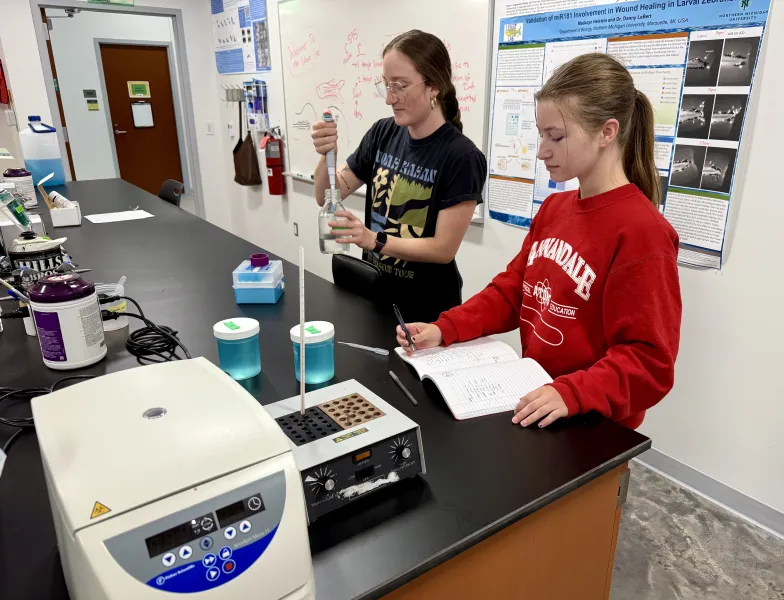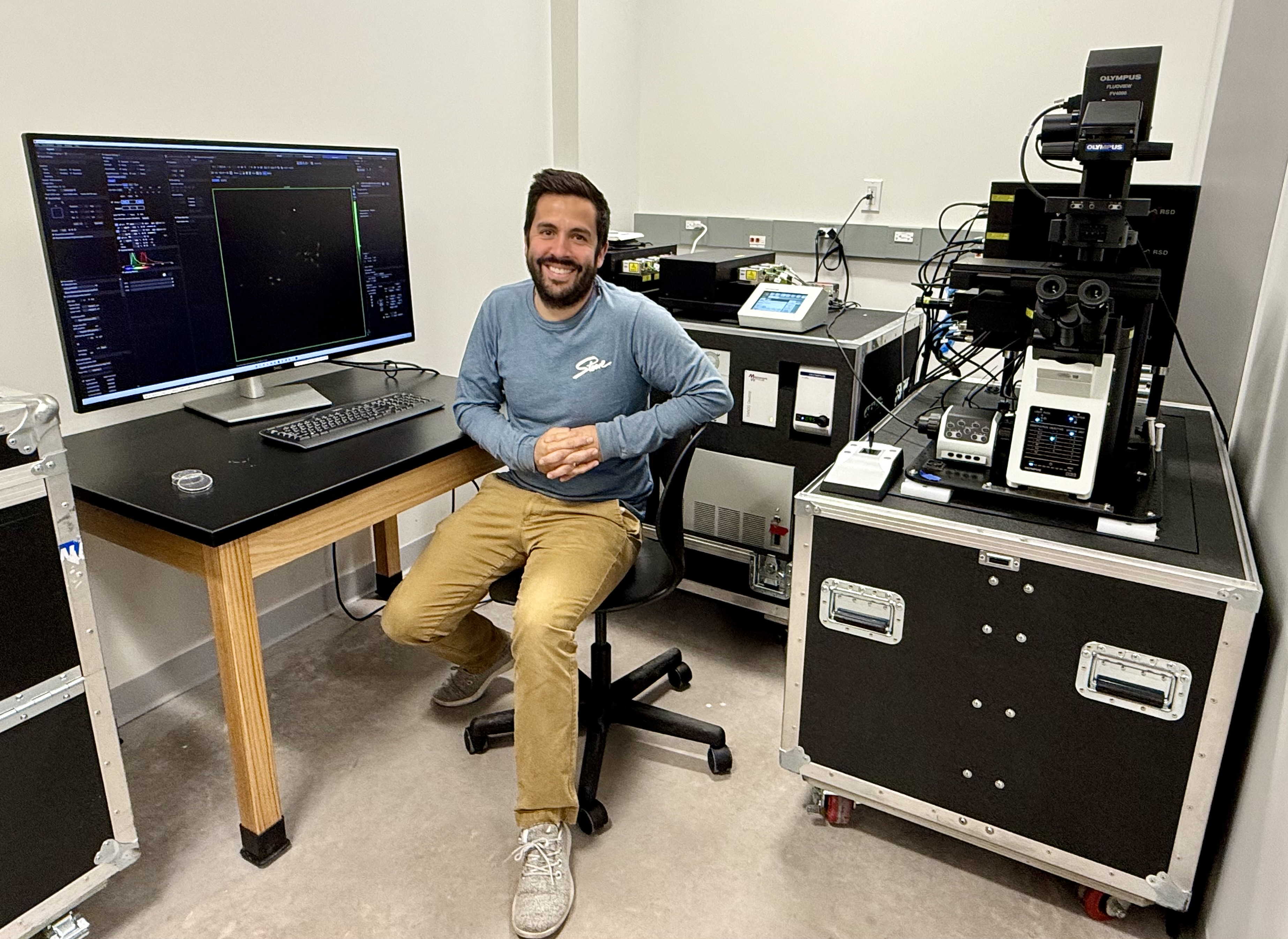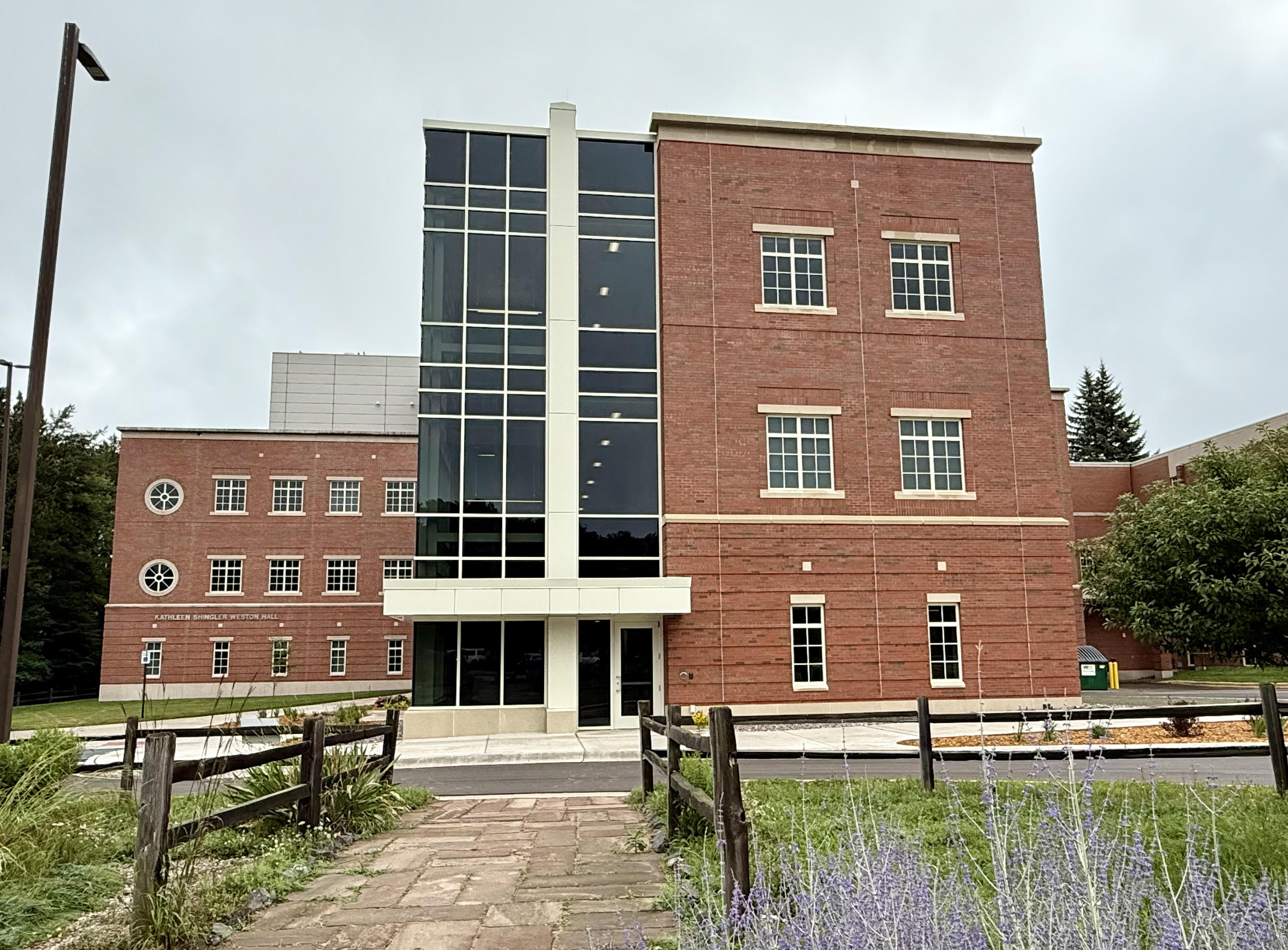Northern Michigan University's recently completed addition to Weston Hall has increased available lab space, elevating the ability of Biology and Chemistry faculty to conduct high-quality research and train students in biomedical techniques. Highlights include two specialty teaching labs: a “world-class” Cell Culture Facility; and a state-of-the-art Microscopy Suite with dedicated rooms to house each of NMU's advanced microscopes, providing a central hub for research projects.
“What's really great is that all of those scopes can connect to the TVs in the main room,” said Rob Winn, dean of the College of Arts and Sciences. “For example, while some students are working with the fluorescent or confocal microscopes, the rest of the class can see what they're viewing through the lens because it is projected on the TV screens. This is a great teaching tool.”
Biology Assistant Professor Danny LeBert runs a laboratory that uses the larval zebrafish as a model to investigate inflammation and wound healing. Many of the studies use advanced microscopy to visualize dynamic cellular processes in real time.
“We can visualize such things as wounds closing, or immune system cells moving throughout the tissue, clearing cellular debris,” LeBert said. “My lab includes two graduate students and nine undergrads who work collaboratively on multiple projects. Having access to a state-of-the-art microscopy suite means our students are gaining experience with cutting-edge imaging technologies that are rarely available to undergraduates at other universities. This provides them with valuable technical skills, strengthens their research portfolios, and makes them more competitive for graduate and professional programs.”
All of the enhancements will boost recruitment potential, he added, because prospective students are drawn to programs offering hands-on experience with advanced technology. LeBert said he believes the improvements will have a lasting positive impact on both Northern's research output and the student learning experience.
“I like the new lab space a lot,” said graduate student Mikaela Fairbanks of the LeBert Lab. “The old one kind of had a shelf in the middle, but this one's much more open. If there are other people in the lab, you can chat a bit and ask about what they're working on.”
“This lab is nicer with more room, and I like its location,” added junior Hosanna Brindle. “I also like the scope room.”
The Cell Culture Facility on the second floor houses 12 Biosafety cabinets used to work with cells isolated from tissues of animals. Robert Belton, associate professor of Biology, said cells grown in culture require sterile conditions to prevent the growth of bacteria or fungi, and the Biosafety cabinets provide the environment needed to work with the cultures. Previously, the Biology department maintained a small cell culture facility with two Biosafety cabinets for use by both NMU courses and researchers in Biology, Chemistry and Psychology.
“During my career here at NMU, we have been unable to provide students with meaningful cell culture experiences in Biology courses because of the limitations on space and equipment,” Belton said. “The new facility provides state-of-the-art equipment and additional space needed to teach cell culture skills for students interested in working in the biotech industry, or developing a career in laboratory research. In my research and teaching career, I have not had the pleasure of working in a facility as nice as the NMU Cell Culture Facility. I am very impressed with this facility.”
Belton's research focuses on the function of a cell-surface receptor called Basigin. He is examining the role of this protein in the development of zebrafish embryos. In his laboratory, students are generating transgenic cells and animals—cells and animals with altered chromosomes—that express fluorescent versions of Basigin proteins to allow them to visualize the expression of the protein while the embryos are living and developing. He anticipates making use of the Microscopy Suite on the first floor of the new addition to perform confocal microscopy of the resulting fluorescent embryos and larvae.
Winn said that because the cell culture technique will never be replaced by artificial intelligence (AI), students are required to learn hands-on applications that will continue to play important roles in various areas of biology.
“With the growth of Northern's biology and chemistry departments and their offerings, we needed more room to teach the necessary courses and techniques,” Winn added. “We also needed more space for faculty to engage in scholarship, as a number of them are very active in that. It's a really beautiful facility overall. New and returning students should be very pleased with the outcome this fall. I think we're going to see an increase in the productivity of our faculty, and I expect that there will be an increase in the number of graduate students, as there is more room to include more students in the work. This is going to have a lot of positive ramifications.”
Biology occupies the bottom two floors of the addition; chemistry has some instrumentation and teaching labs on the third floor. There are also 15 new faculty offices. A ribbon-cutting ceremony followed by tours of the addition will be held at 2:30 p.m. Thursday, Sept. 18.



